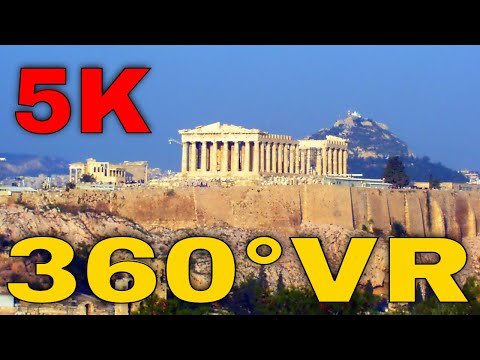
In an age where technology and travel intersect more seamlessly than ever before, virtual reality (VR) has opened up unprecedented opportunities to explore the world from the comfort of our own homes. Among the most breathtaking examples of this technology in action is the 360° VR tour of the Acropolis of Athens, Greece. These high-definition, immersive videos have gone viral on YouTube, dazzling viewers with stunning views and a depth of detail that was unimaginable just a few years ago.
#### The Magic of 360° VR
360° VR videos offer a panoramic view that puts the viewer at the center of the scene. Unlike traditional video, where the perspective is fixed by the camera operator, 360° videos allow you to look around in every direction. For historic sites like the Acropolis, this means you can experience standing atop its rocky outcrop, gazing out over Athens as if you were there.
#### High Definition Clarity: From HD to 5K and Beyond
The quality of these videos has also seen remarkable improvements. Initially available in high-definition (HD), these videos are now being offered in ultra-high-definition (4K) and even 5K resolutions. The increase in pixels not only enhances clarity but also deepens immersion, making every detail—from the weathered stones of ancient ruins to distant cityscapes—vividly come alive.
#### Educational and Cultural Impact
The educational possibilities presented by VR tours like those of the Acropolis are significant. Schools around the world can use these videos as tools to enhance learning about history, architecture, and culture without ever needing to leave the classroom. Students can virtually walk through ancient pathways, gaining a spatial understanding that textbooks could never convey.
Culturally, these videos offer millions worldwide a glimpse into Greek heritage without needing to travel; this is particularly valuable for those who might never be able to visit due to financial reasons or mobility issues. It democratizes access to world heritage sites in an unprecedented manner.
#### YouTube as a Platform for Viral Travel Videos
YouTube has been instrumental in popularizing 360° VR travel videos. Its platform allows users easy access not only on computers but also via mobile devices and dedicated VR headsets. As viewers crave new experiences and innovative content delivery methods, YouTube’s extensive reach helps make viral successes out of professional-quality VR productions.
Creators capitalize on YouTube’s algorithmic tendencies by tagging their videos with eye-catching keywords like “5K,” “3D,” “Virtual Reality,” “HD,” and “4K.” These not only enhance discoverability but also communicate quality benchmarks expected by tech-savvy audiences.
#### The Future Looks Even More Immersive
As technology progresses, we anticipate even more advancements in virtual reality experiences. Innovations like augmented reality (AR) integrations may soon allow interactive elements within these tours—imagine clicking on parts of the Parthenon to receive detailed historical facts or restoration updates directly overlaid onto your virtual view.
Furthermore, enhancements in haptic feedback technology could simulate textures and temperatures, offering a multi-sensory experience that approximates physically being there even more closely. The potential for live-streamed VR tours could also transform tourism further—offering real-time experiences remotely during events or ceremonies.
#### Conclusion
The combination of YouTube’s platform capabilities with cutting-edge 3D video technology invites us all to explore corners of Earth like never before—with each update bringing sharper images and deeper engagement into viewers’ homes around globe. Viral travel videos featuring places like the Acropolis help foster global cultural appreciation and understanding across borders—an exciting prospect at any resolution.
